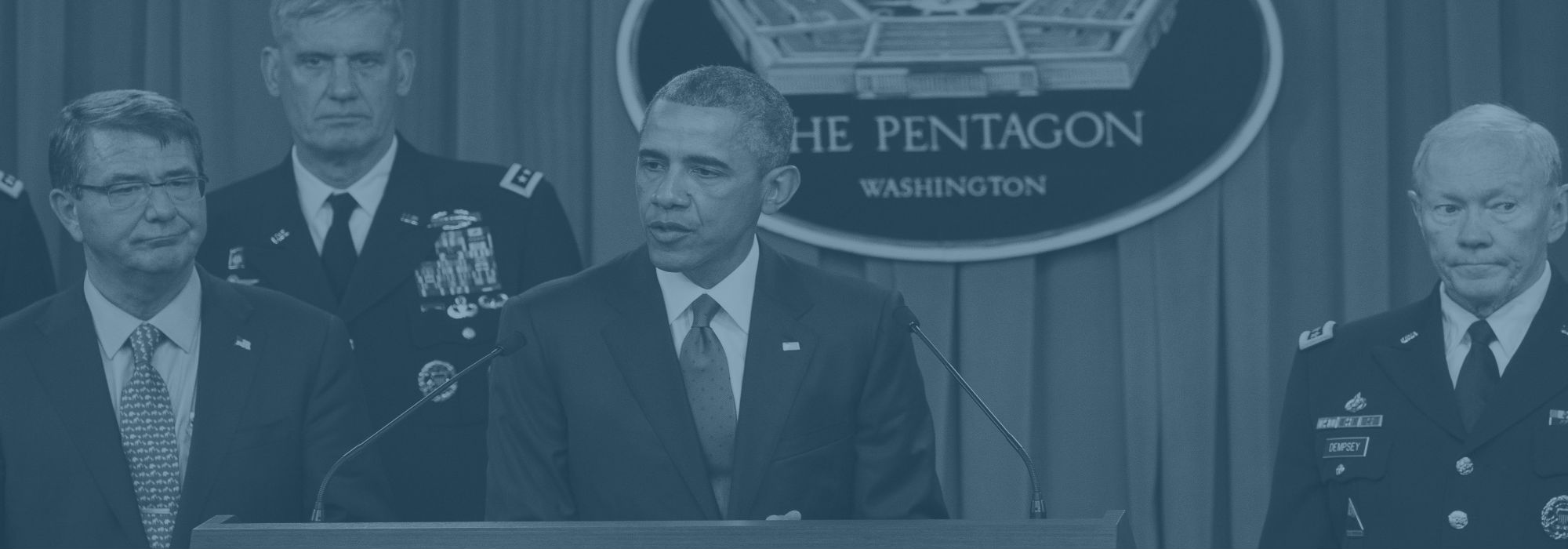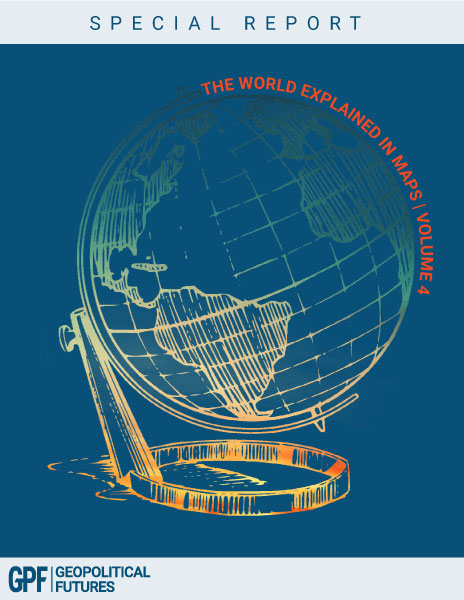By Jacob L. Shapiro
It is easy to say that the United States has no interest in another ground war in the Middle East or Eurasia. It is harder, however, for the U.S. to remain disciplined in practice. One of the implications of the United States’ overwhelming global power is that the U.S. can afford to make strategic mistakes and live not only to fight, but to thrive another day. If a weaker nation had made a mistake on the scale of the second Iraq War, that nation would face a deep existential challenge. The U.S. merely tries to learn from prior mistakes. The lessons from Afghanistan and Iraq have led the U.S. to pursue a balance of power strategy throughout the world, nowhere more clearly than in the Middle East.
The Pentagon yesterday released the name of a Marine staff sergeant who was killed in action on March 19 in Makhmour, Iraq, approximately 75 miles from the Islamic State-held city of Mosul. This marks the second U.S. casualty in Iraq since the U.S. initiated Operation Inherent Resolve against IS in June 2014. Speaking to Reuters, an anonymous defense official said that the Marine was killed in an IS rocket attack against an American firebase, a base to house artillery used to support U.S.-trained Iraqi forces in a ground assault on Mosul. The existence of the base had been a secret until now; the IS attack forced the Pentagon to confirm the base’s existence earlier than it had planned.
The number of U.S. troops and military advisers on the ground in Iraq has slowly begun to increase. What began as a deployment of 300 military advisers in June 2014 has grown to approximately 3,700 U.S. personnel and soldiers, including a limited number of special operations forces and a light infantry brigade from the 101st Airborne Division. The Marine killed in the attack was a member of the 26th Marine Expeditionary Unit (MEU), which, according to the Pentagon, deployed in October 2015 to maintain regional security in the Persian Gulf, Red Sea, Arabian Sea and parts of the Indian Ocean. Whether the 26th MEU is now permanently joining U.S. forces already in Iraq is unclear. An anonymous defense official told CNN that a “couple of hundred” Marines were now stationed in Makhmour.
The Vietnam War has been used as a cautionary tale for every U.S. military engagement in the last 40 years, and is often brought up in regards to the 2003 Iraq War and the United States’ subsequent return to battle IS. The historical overtones to this slow increase in U.S. military capability on the ground in Iraq are hard to ignore. Dwight Eisenhower sent hundreds of military advisers to South Vietnam starting in 1955. John F. Kennedy sent thousands more to train the South Vietnamese against Viet Cong guerillas. By the end of 1965, the South Vietnamese were being beaten so badly that Lyndon B. Johnson had dispatched almost 200,000 U.S. military personnel to Southeast Asia. In Iraq, a U.S.-trained armed force was defeated multiple times by the Islamic State, threatening the viability of Iraq as a country. It necessitated a slow trickle of U.S. forces back into the region. And despite President Barack Obama’s insistence that there will be “no boots on the ground,” exceptions, distinctions and previously unannounced firebases are all emerging.
Despite the similarities, it is a mistake to think of U.S. deployment to Iraq as a second Vietnam. Vietnam was a Cold War battleground. The U.S. worried its containment strategy toward the Soviet Union would not succeed if Vietnam fell to communists, and it was concerned that the Chinese would intervene to defend the North Vietnamese. The U.S. also had to demonstrate to its allies that it was not just paying them lip service when it said that it would intervene to defend them against any potential Soviet aggression. The U.S. had to show that it really would “pay any price, bear any burden, meet any hardship, support any friend, [and] oppose any foe,” as Kennedy promised. The Vietnam War was prosecuted during a time of fear, and during a period of history in which the Soviet Union loomed as a peer to the U.S. – a Eurasian hegemon that could challenge the U.S. position in the world.
The context of the United States’ intervention in Iraq is different. There is no challenger to U.S. power in the world, nor is there one on the horizon in the next 20 years. European states like Poland and Romania do not derive reassurance about U.S. support from the its operations in Iraq. European allies don’t care about what the U.S. does in Iraq in the same way that they cared about what the U.S. did in Vietnam. If anything, U.S. allies on Russia’s periphery would prefer the United States spend less time in the Syrian and Iraqi deserts.
The U.S. is playing a spoiling role in Iraq and Syria. It sees in the Islamic State the potential for a strong Sunni Arab power that could frustrate the balance of power the U.S. is attempting to construct in the region between Turkey, Israel, Saudi Arabia and Iran. Such a power would not be a direct threat to the U.S., but it would be a powerful anti-American force to be reckoned with in the heart of the Middle East. The U.S. cannot afford to occupy Iraq or Syria – but it is in the United States’ interest to make sure that IS is prevented from growing, that local forces are built up sufficiently to at least contain IS and that regional powers take greater ownership over managing regional conflicts.
However, this is the point where American power becomes as much a burden as an asset for leaders in Washington, considering the regional players’ reluctance to get involved. Turkey now has been attacked multiple times by the Islamic State – most recently on March 19 by a suicide bomber in Istanbul. But the Iraqi Arabs don’t trust the Turks – the presence of Turkish forces to train Kurdish peshmerga fighters in northern Iraq caused a diplomatic spat back in December 2015. The U.S. is cooperating with Iranian-backed troops on the ground in Iraq – the Shiite Popular Mobilization Forces have been some of the most effective anti-IS fighters and are supplied by both the U.S. and Iran. But while Iran has forces on the ground in Syria and Iraq, its intervention has not been enough to stop IS. Israel is too far away to offer any tangible support, and the Saudis cannot decide if they are more afraid of the Iranians or IS – so they continue to support radical jihadist militias in Syria to try and bring down Bashar al-Assad in the hope of scoring a blow against both. Amid the chaos, its tempting for an American leader to think that the easiest thing to do is to simply knock out IS and to worry about building a balance among these disparate powers later.
Furthermore, the Islamic State is a brutal regime, one that has committed many violent atrocities against its local population and believes itself to be at war not just with the U.S., but with Western values. There are many brutal and violent regimes that exist in the world, but IS’ penchant for theatricality and public relations, as well as its very loud denouncing of Western values, mean that people pay attention to it more than others. The same was true to a lesser degree of the second Iraq War. There were strategic reasons to topple Saddam Hussein. But part of the reason the U.S. went into Iraq in the first place was because the George W. Bush administration equated the spread of liberal democratic values with realizing U.S. strategic goals. There was a real belief that a liberal democracy ruling from Baghdad would usher in a regional enlightenment. The result instead was the disintegration of Iraq, the elimination of the natural competitor to Iran and the rise of IS. No other country in the world besides the United States would consider making such important strategic decisions based partly on equating morality with the national interest. Though such thinking is not in vogue right now and has proven ineffective in the past, it is latent in even Obama’s distinctly pragmatic foreign policy.
Taking a step back, we can say that it has been a busy weekend for the global hegemon. Besides the attack on its new firebase in Iraq, the U.S. came to an agreement with Manila over which five military bases the U.S. will have access to, ending a 24-year hiatus of U.S. military basing in the Philippines. Obama also traveled to Cuba, marking the first state visit by a sitting U.S. president to Cuba since Calvin Coolidge in 1928. Coolidge’s trip to Cuba came during a time of U.S. isolationism – it was the only trip he took abroad in his entire four-year presidency. The notion that a U.S. president could only make one foreign trip in today’s world is unthinkable. Coolidge was president at a time when the United States’ challenge was to increase its power. In contrast, the challenge for Obama is to use U.S. power more effectively. The emphasis on balance of power strategies is part of that learning process and how Geopolitical Futures believes the U.S. will act in the future, no matter who sits in the Oval Office.








